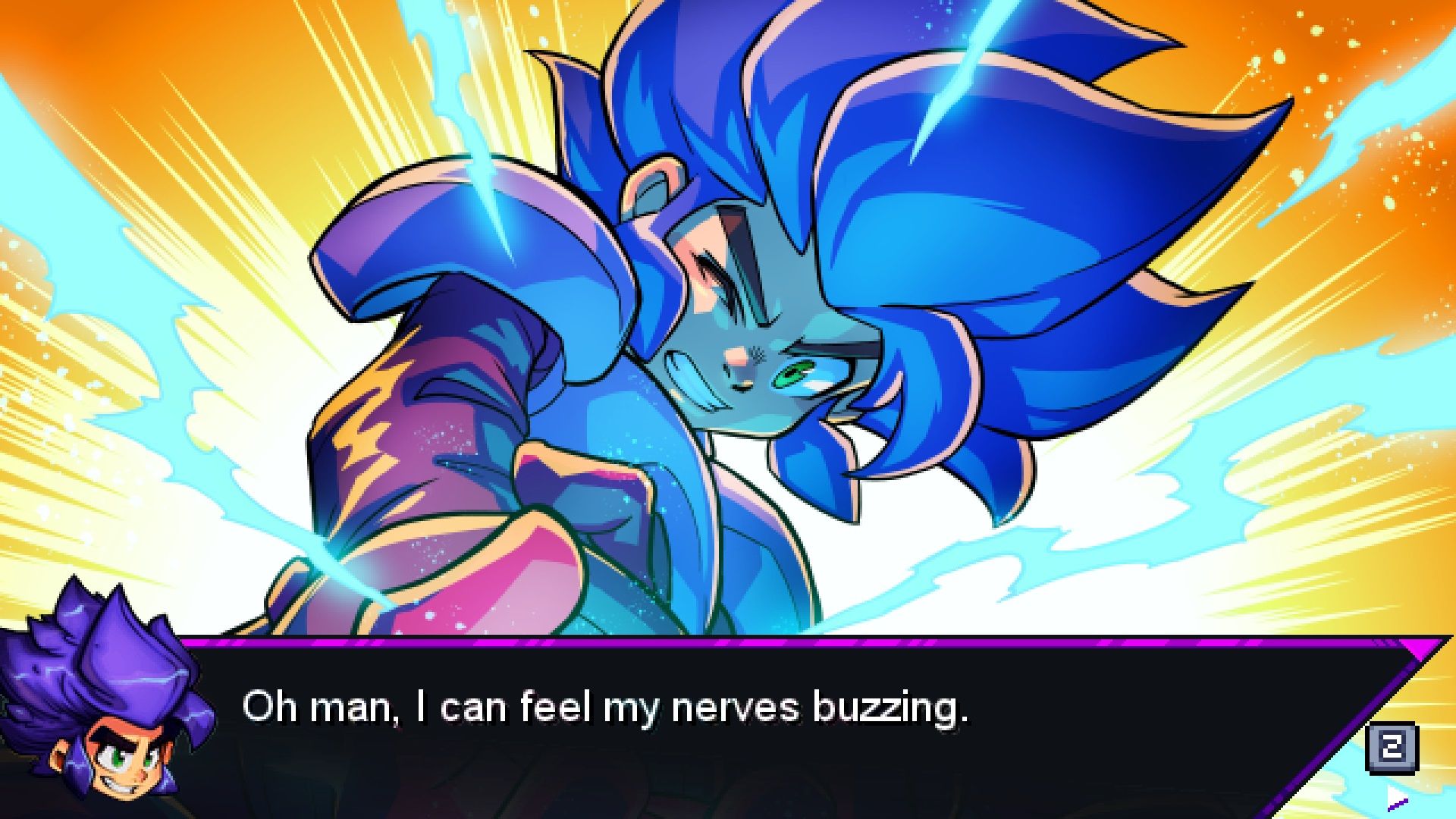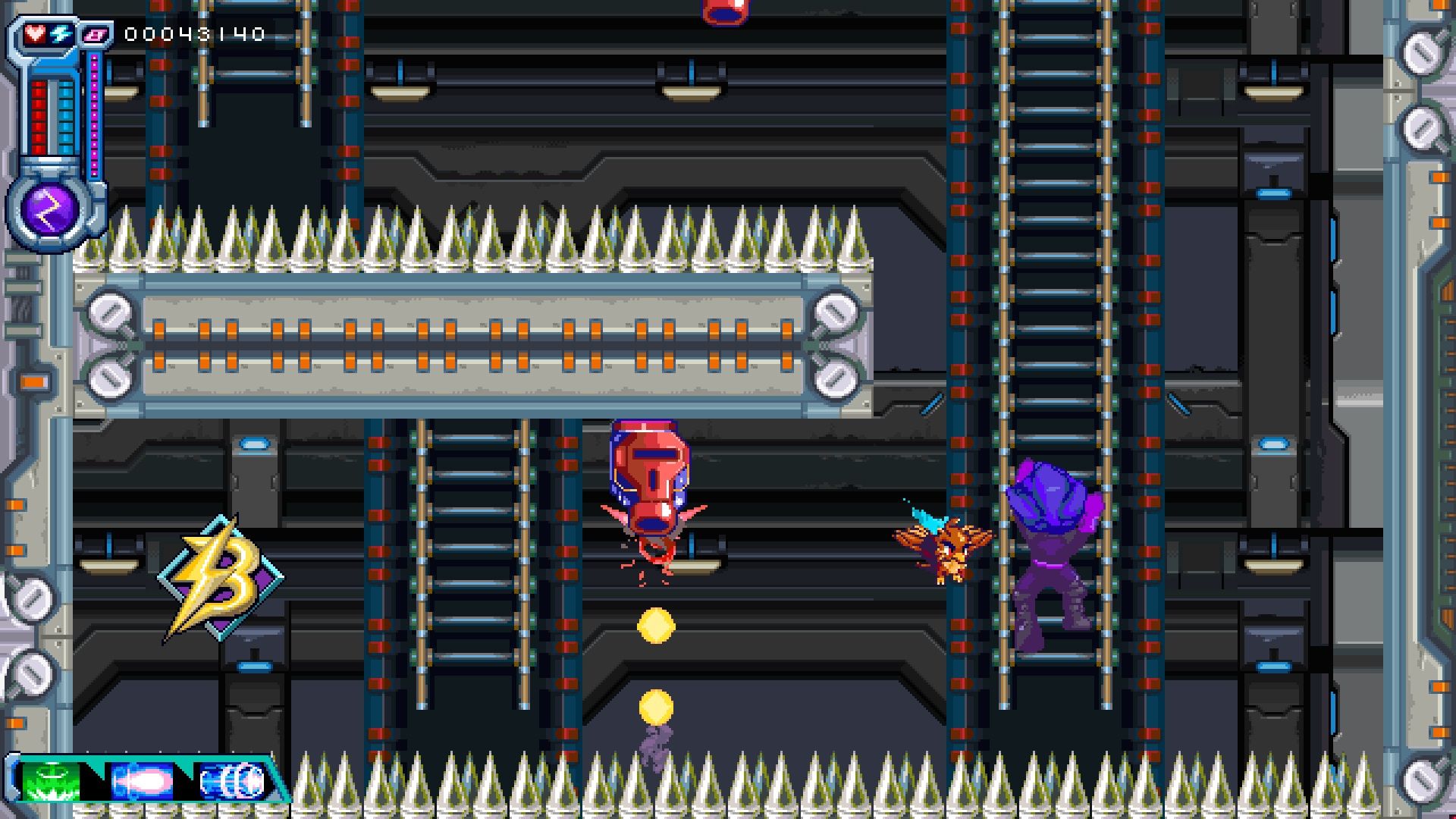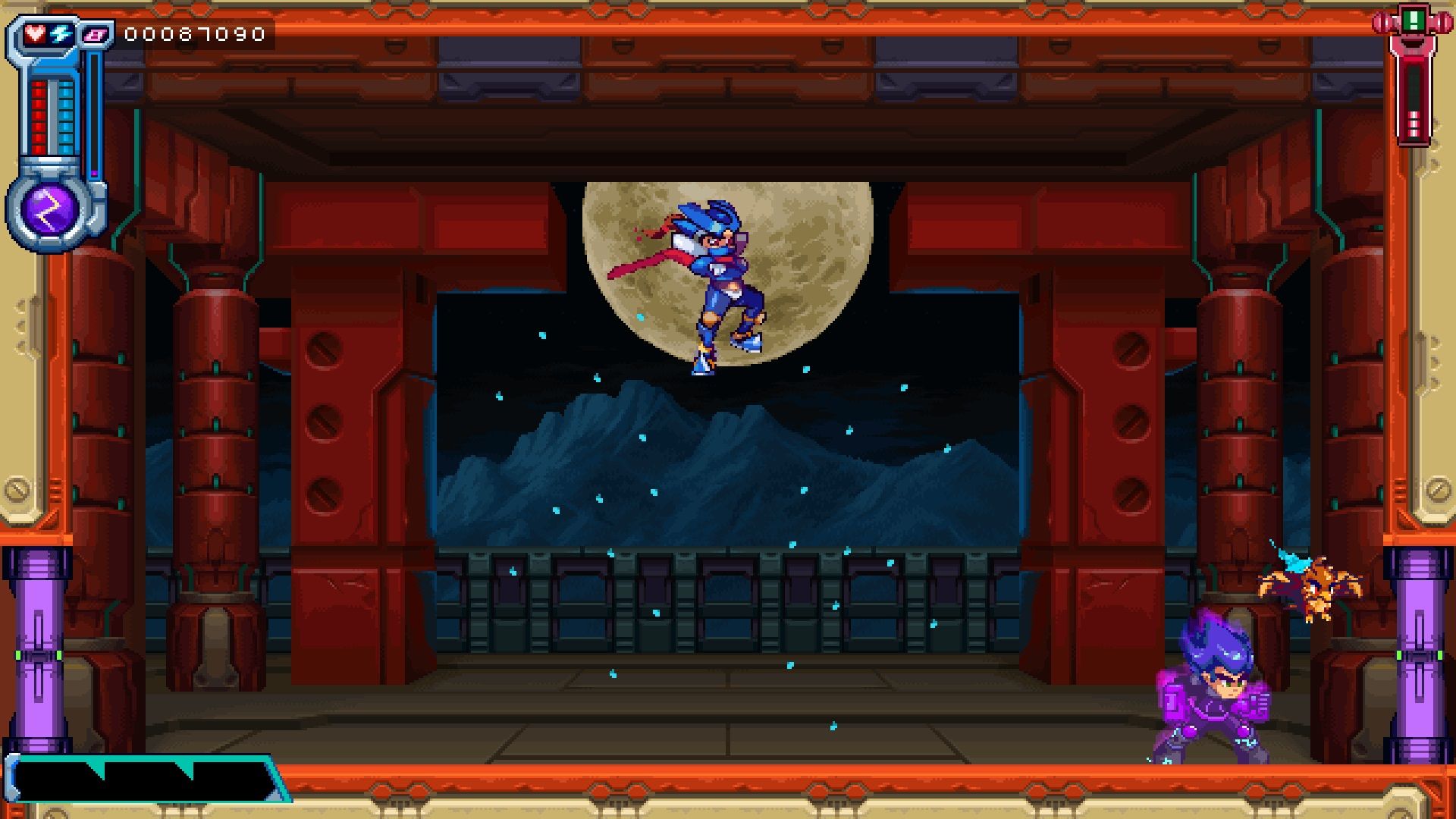Berserk Boy Review
Berserk Boy is a high-speed retro action platformer with a great soundtrack, gorgeous pixel art, and some classic retro attitude. The game clearly takes a lot of inspiration from the Mega Man franchise, especially the Mega Man X and Zero series. However, its Metroidvania elements, sound design, and cartoony flair give it its own identity as well.
In a world under siege by evil creatures known as Shades, humanity has banded together under the banner of the Resistance. Teens Kei and Dizzie go out searching for a powerful object called a Berserk Orb. Instead, Kei finds the mysterious talking bird Fiore. Fiore is on the run from the maniacal Dr. Genos, a scientist whose desire to harness Berserk Orbs for the sake of humanity has been eclipsed by greed for power.
After Fiore tries to merge with the orb and is overpowered by Dr. Genos, Kei makes one final attempt to save the day. He painfully merges with the orb himself, taking on a new form in the process: Berserk Boy. Now he must battle Dr. Genos’ army of Shades and colorful bosses to claim their Berserk Orbs and save the world.
If this sounds like a delightfully cheesy retro game premise, then congratulations, you’re Berserk Boy’s target audience. This game isn’t trying to be anything more than what it is. Fortunately, what it is happens to be incredibly fun.
Retro Platforming Action
Berserk Boy combines the premise of Mega Man with the attitude of Sonic the Hedgehog. The result is a slightly disjointed narrative, cheesy but fun dialog full of puns, and some entertaining characters. The game is definitely not story-driven, but the story it does have is funny. There is a lore cutscene, but you have to trigger it manually.
This title has two modes. Modern mode allows infinite retries, while retro mode has a set number of lives and stronger enemies. Either way, Berserk Boy has very slick mechanics. Platforming is smooth and easy. However, what each button does is not always clearly explained. I found myself making mistakes fairly often, adding to the trial and error.

The Metroidvania elements come in very quickly. It’s an odd experience to spot alternative paths in a platformer and be unable to actually follow them. Kei unlocks new forms with new abilities every time he beats a boss. However, the first form unlocked is probably the best for platforming, bar the one that flies. And it has a lot of movement-related unlockable powers. This is convenient, but it does mean other forms have limited options. Some seemed to be made entirely for puzzles rather than actual combat.
The game encourages you to replay levels repeatedly between exploration attempts to afford the Metroidvania-style upgrades. The ranking system lowers your score for dying. When exploring a new path, you tend to die a lot. This encourages replaying previous levels, especially when you start hunting for the game’s many collectibles.
Berserk Boy Goes Hard
Berserk Boy is difficult and unforgiving with its platforming right from the start. The harsh ranking system and tons of hidden collectibles encourage replay. Beyond that, the game is challenging enough that raising your rank feels legitimately satisfying. It encourages you to learn the layout of each level thoroughly.
Some of the collectibles and optional paths are very well hidden. Others are more obvious, requiring the player to memorize the fastest route for the best score. I like that dashing is an attack as well as a dodge and a traversal mechanic. This allows for some very fun level arrangements. Of course, the flip side is that platforming tends to be more difficult than the bosses.

The soundtrack is genuinely fantastic. In fact, it may be some of my favorite video game music ever. It really adds that bouncy arcade feel to a very good faux-retro title. And no wonder, since they got composer Tee Lopes of Sonic Mania fame onboard.
Berserk Boy features simple but fun character designs, bright colors, and adorable sprites. I’m really fond of Kei’s various forms. The art style mixes timeless appeal and retro attitude. And the game’s levels feature large, lush, and colorful environments. The game is relatively short, but as I said, it rewards replaying levels over and over to master them and find all the secrets.
Voice acting is pretty sparse, simple, and exaggerated. It does add to the cartoony retro tone, though, so I won’t complain.
No Hand-Holding, No Mercy
Berserk Boy mostly comes by its difficulty honestly, but there are some sections that are just frustrating. I came to dread Dizzie showing up with her gun because the shooter sequences annoyed me so much. And while Metroidvania upgrades are well and good, the fact that you have to buy a double dash is the bane of my existence.

For some reason, the text boxes can occasionally block the sprites, making it hard to tell what’s happening. And some sound effects are annoying. The noise Kei makes when he dies is especially bad, and you’re likely to hear it a lot.
Finally, there is a major structural annoyance. After a certain point, you need to talk to a specific rescued NPC, then replay levels and gather badges to proceed. Although the game does hint at this, it’s a little unintuitive.

Overall, Berserk Boy takes much more from the likes of Mega Man than it does the Metroidvania genre. This is not a bug, it’s a feature. I for one am very happy we got a high-speed action Mega Man in 2024. If you enjoy retro platformers, get out there and play Berserk Boy.
***PC code provided by the publisher***
The Good
Fun action platformer
Great music
Great visuals
Funny
Great replay value
85
The Bad
Minor visual issues
Frustrating sections
Short
Mandatory collectathon
>>> Read full article>>>
Copyright for syndicated content belongs to the linked Source : CogConnected – https://cogconnected.com/review/berserk-boy-review/































